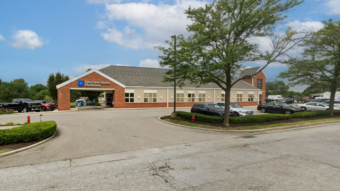When Amazon announced plans to acquire a 70-acre site on Chicago’s Southwest Side for a future warehouse and distribution facility, the news underscored growing urban infill industrial demand. Creative developers and investors are navigating the complexity to bring urban infill projects to fruition for a diverse range of users.
In a recent SIOR Chicago Fireside Chat, SIOR Chicago Chapter Vice President Sam Badger, SIOR, Senior Vice President, CBRE, discussed urban infill trends and challenges with Aaron Martell, Executive Vice President, Logistics Property Company.
The following are highlights of their discussion.
Sam Badger: Is demand for urban infill sites coming only from e-commerce, or is additional demand coming from other types of users?
Aaron Martell: It’s a bit of a misconception that the only people doing deals in city infill sites are e-retailers.
In the McKinley neighborhood where our building on Ashland Avenue is located, there is a huge Pepsi distribution center. North of us is the Chicago produce market. A wine auctioneer is across the street from us. ComEd is down there. The city has done a good job of setting these areas up as traditional business parks.
Granted, the e-retailers are getting the headlines and doing the bigger deals and higher-rent deals. But, these locations function very much like your traditional industrial parks.

Badger: Let’s talk about the competition and rent. There’s a big difference between industrial rents in the suburbs versus down in the city.
Martell: The infill city sites, much like the in-demand submarkets, have been experiencing tremendous rent growth. In some cases, there’s been 20% rent growth over the last three years. The rent growth is there because there’s lack of supply, and it’s in line with some of the other traditional infill markets, like O’Hare.
Badger: Your firm is doing development all over in the suburbs and in the city. What first drew you into urban development?
Martell: We’re consistently looking to provide value to our investors and our tenants. Infill made sense to us to pursue both from being in our backyard, but also seeing a value proposition based on discounts compared to some other markets.
When you’re on your way to work, you’re eying different sites, trying to figure out what makes sense and what doesn’t, and who’s doing this, that or the other. As we were doing that, we were seeing some of the land prices. You have the same infrastructure and population density as some of your tighter infill markets. So why was this city land available at such a discount? It’s still at a discount now, but not as much as what it was 24 or 36 months ago. We saw some opportunities and the land prices made sense.

Badger: What are the big differences between developing an infill site versus a site in the suburbs?
Martell: One of the main things is getting aldermanic buy-in for your project. We were fortunate. The aldermen who have districts that have manufacturing zonings and PMDs [planned manufacturing districts] understand it and they want this development because it’s been a lifeline to these communities for a hundred-plus years.
Where you’re trying to do that one-off deal potentially surrounded by residential or outside these business parks or PMDs, it’s going to be more challenging. You don’t want to get too far before having that conversation with the alderman. There’s a whole multitude of things you have to go through in terms of planning and designing.
We try to get a feel for what the local community’s doing, the vibe of that local community, and try to build something that’s in keeping with the history and traditions of that neighborhood, as corporate steward or a corporate citizen of that community.
Badger: In terms of building design, what have you learned in your experience with urban infill projects?
Martell: With some of the deals that we do with e-retailers, seeing the way they chop up the site plan to their standards, to their specifications, to their circulation and safety requirements, is a great education. From a design perspective, you want to stand on the shoulders of those who’ve gone before you, those who’ve done it differently.
Badger: Your company’s flagship Chicago propertyat 3711 South Ashland Avenue has an enormous mural on its Ashland Avenue façade. What is the story behind the artwork?
Martell: It’s near and dear to us. Because we’re so close to the Bridgeport Art Center, we thought that we should consider dressing up the façade on the Ashland side of the building. It was important for us because, when you put up a 40-foot, 270-foot-long wall, as a good corporate steward you have a responsibility to do something that’s attractive.
We partnered with Chicago Public Art Group. We’re doing a couple of projects with them. Murals are not a huge cost item, but it really adds to the traditional spec building design that we’re used to seeing. A funny thing happened—one user said, “So can we paint over it?” Our thought was, “Um, you’re clearly missing the point of what we’re doing here in the community.” So, we structured the lease accordingly—you can’t paint over it. It was important for us to do something in a community with such a rich art history background.
Adam Marshall is the SIOR Chicago Chapter President and Senior Vice President with Newmark




